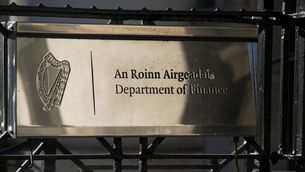House construction growth cooling as supply disruptions begin to bite

Business confidence among building firms has improved on the back of the further increase in construction activity and new business orders last month.
The growth in house building activity softened further last month, despite overall continued growth for the construction sector.
Ulster Bank’s monthly construction index rose to a reading of 56.9 points for October, up from 56.3 in September.
While October’s rise in activity was the softest since April, the reading is still well above the neutral 50 points which separates an industry in growth mode from one in decline.
The growth was driven by a sharp and accelerated rise in commercial building projects; with civil engineering work falling and the rate of growth in housing activity continuing to soften.
Business confidence among building firms has improved on the back of the further increase in construction activity and new business orders last month.
New business streams have now increased in each of the past seven months as the release of pent-up demand continues.
Construction firms said they quickened their staff hiring rate last month in response to the increase in general activity levels.
Confidence levels are strong, with some companies expecting a further release of pent-up demand over the coming year.
"Commercial activity was particularly strong in October as the pace of growth picked up markedly, while residential activity registered solid expansion last month, albeit at a reduced pace relative to September," said with Ulster Bank chief economist in Ireland Simon Barry.
However, Mr Barry said that supply-chain disruptions remain a highly problematic headwind for construction firms.
"Respondents cited Brexit, Covid-disruption and shortages of delivery drivers and materials as factors which contributed to a record lengthening of delivery times and record growth in input costs," he said.
"Nonetheless, despite such headwinds, firms remain confident about the 12-month ahead outlook," he said.
"Sentiment ticked up from September and was again above long-run average levels, reflecting expectations that the ongoing release of pent-up demand will continue to support activity growth in the coming year," Mr Barry said.












